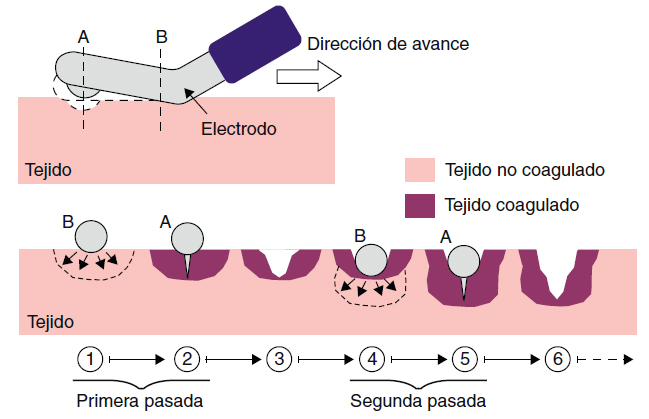
Intraoperative blood loss and perioperative transfusion increase mortality and morbidity, and reduce long-term survival after liver tumour resectioning. Efficient and safe transection of biological tissue in liver surgery depends largely on the ability to simultaneously address parenchymal division and haemostasis.
In addition to conventional methods, other techniques based on radiofrequency (RF) currents have been widely employed to reduce intraoperative blood loss. Thanks to these continuous improvements in medical technology and post-operative care, reported perioperative mortality has been reduced. However, there is still no optimal transection technique.
One of the main aims of our research is to achieve an easy and safe way to divide the liver and pancreas using new RF devices (such as Coolinside, created by our research group) that allow efficient, fast and safe transectioning. In addition, transectioning the liver with RF allows us to create deeper thermal lesions that can reduce localised recurrence in the liver.

Diagram of how Coolinside® works. Top: side view showing the distal section with the scalpel blade (A) and coagulation with the active proximal part (B), as well as the direction the probe moves through the target tissue. Bottom: cross-sectional view of a fragment of tissue showing two sequential applications. Each application consists of two stages: first, the tissue is heated (and coagulated) by applying radiofrequency currents (arrows) using the proximal section (steps 1 and 4); then the blade in the distal section dries the previously coagulated tissue (steps 2 and 5)
Important publications
© Institut Hospital del Mar
d'Investigacions MèdiquesLegal Notice and Privacy Policy | Cookie Policy | Site Index | Accessibility | Find Us | Contact